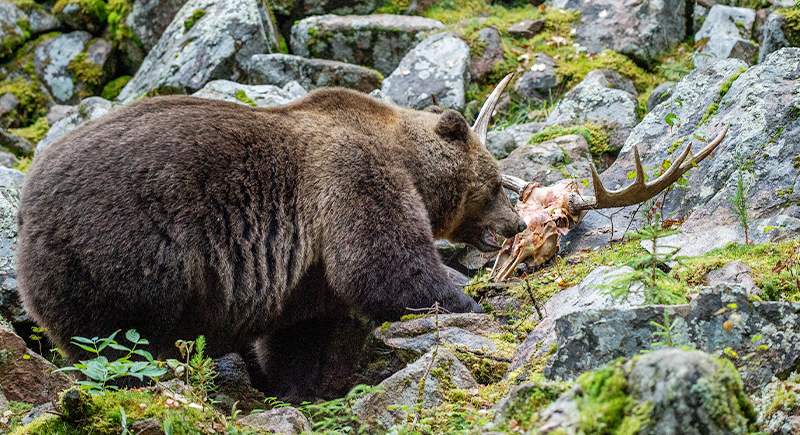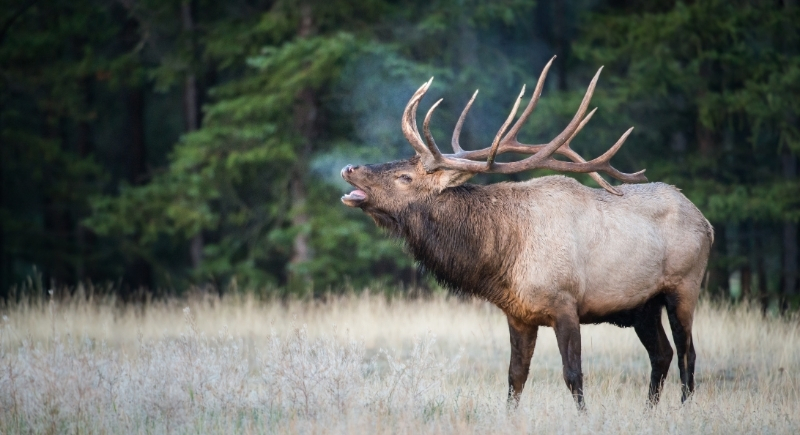The Strange Story of the Bear That Became Best Friends with Its Own Prey
In the woods outside Winnipeg, people began noticing something that didn’t fit the usual rules of nature. A young grizzly and an elk moved together like companions instead of predator and prey. The bear never lunged, and the elk never bolted. Over the years, their odd partnership grew familiar to locals, who expected instinct to eventually win out. It never did.
The two kept to each other’s side until the day a hunter’s shot ended the elk’s life. What followed left onlookers unsettled: the bear lingered over the body, tried to pull it away from danger, and refused to leave even as scavengers circled.
Predator and Prey Behavior Comes from Evolution

Image via iStockphoto/USO
Under normal circumstances, bears would be hunting down elk. This is a well-documented ecological relationship, where the latter, especially calves, appear frequently in bear diets in regions like Yellowstone.
On that note, predators develop stealth, strength, and timing to track and catch prey, while the prey evolve strong flight instincts and social cues to avoid being taken. Each side influences the other across generations. This repeating cycle further explains why a bear typically doesn’t hesitate to pursue a vulnerable elk.
Bears Have Strong Responses to Elk Scents
Despite the surprising friendship we see in the clip, real-life encounters between bears and elk rarely show restraint. Hunters across the Rocky Mountains regularly deal with aggressive bears’ interest in elk scents and calls.
In Colorado, a black bear tore through a tent to reach the cow elk estrus scent, while ignoring everything else inside. Grizzlies often respond directly to elk bugles, sometimes arriving within minutes.
Wildlife officers have also recorded cases of bears claiming elk carcasses during field dressing and guarding the site for days. These risks rise in early fall, when bears need tens of thousands of calories per day before hibernation begins.
Animal Grief Still Raises Questions for Scientists

Image via Getty Images/Jillian Cooper
The video also highlights the strength of the friendship between predator and prey, which became visible after the loss of the elk’s life. The bear refused to abandon the carcass or scavenge it. Instead, it tried to drag the elk to safety, stayed nearby, chased away crows, and lay beside the body for an extended period. These actions didn’t resemble typical feeding behavior. They looked more like an emotional attachment.
While science doesn’t easily classify grief in animals, certain species, like elephants and whales, have shown signs of distress when group members are lost.
In the Manitoba bear’s case, some researchers see instinct or learned behavior, while others believe it could reflect emotional recognition. The evidence remains open to interpretation, but the moment adds to a growing body of examples suggesting that some wild animals respond to loss in ways we don’t fully understand.